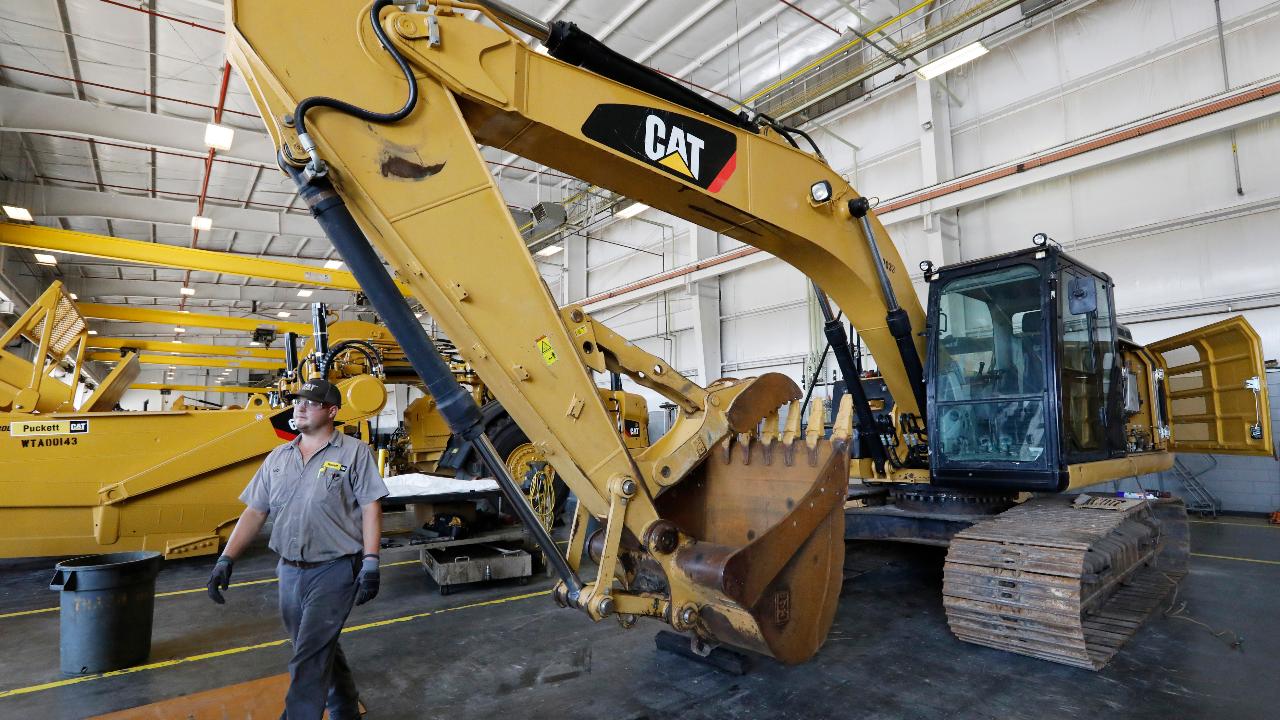Brian Brenberg: Here's what the US needs to launch a second manufacturing comeback
Manufacturing activity in the United States declined for a second straight month in September, hitting lows we haven't seen since 2009. The president placed the blame squarely on the Federal Reserve for keeping interest rates too high, causing the dollar to strengthen and exports to falter. He’s right, but interest rates are only part of the picture. If manufacturing is going to have a second comeback under President Trump, it’s going to need help from the Fed, from Congress, and from the president himself.
According to a leading measure of manufacturing activity, U.S. manufacturing has contracted for two straight months, driven by a drop in exports that hit lows not seen since the great recession in 2009.
The president blames the slowdown on a strong dollar caused by overly aggressive Fed policy, and he has a point. The Fed raised rates four times in 2018, including a controversial hike in December that caused stocks to crater as investors feared higher interest rates could stall the economy. Elevated interest rates in the U.S. compared to the rest of the world helped strengthen the dollar by 3% in 2019, hurting U.S. manufacturers whose goods became more expensive abroad.
Manufacturers no doubt welcome the president’s call for sharper interest rate cuts and a weaker dollar, but as they well know, reviving the sector will take more than cheaper money. The reality is, investment and sales in the manufacturing sector continue to be held back by trade uncertainty—Mexico, Canada, and China are America’s biggest trading partners, and trade relations with all three are stuck in limbo. There is plenty Congress and the president can do to put our trade relationships on surer footing and help relaunch America’s manufacturers.
If manufacturing continues to languish, Congress will bear no small measure of the responsibility for inaction on the USMCA.
When it comes to Mexico and Canada, the ball is in Speaker Pelosi’s court. The USMCA—an updated trade agreement to replace NAFTA—has been waiting for approval from Congress for the better part of a year. In the meantime, manufacturers have been left wondering what new trade rules they will have to follow and when these rules will take effect. The uncertainty is debilitating, cutting off new investment, hiring, and growth.
If manufacturing continues to languish, Congress will bear no small measure of the responsibility for inaction on the USMCA.
The President can turn up the heat on Congress to act on the USMCA by making progress on the trade dispute with China. Negotiations resume this month, and both sides would benefit from an initial agreement that offers stronger intellectual property and cybertheft protections in exchange for a reduction in tariffs. Nothing would provide a more immediate jolt to exports than improving clarity and access when it comes to our biggest trading partners.
U.S. manufacturers have been hit by a triple whammy of a strong dollar, an unfinished trade agreement with our neighbors, and an escalating rift with our biggest trading partner. The president’s critique of U.S. monetary policy is valid, but he doesn’t have to wait for the Fed to act. He helped catalyze a manufacturing comeback in the early days of his administration and he can do it again by pushing Congress to pass the USMCA and getting results in upcoming trade talks with China.
America’s manufacturing sector needs some help. The Fed, Congress, and the President can all lend a hand.
Professor Brian Brenberg serves as an Executive Vice President and Chair of the Program in Business and Finance at The King’s College. Prior to joining the King’s faculty, he worked in the financial services and medical device industries, as well as public policy research and philanthropy.
